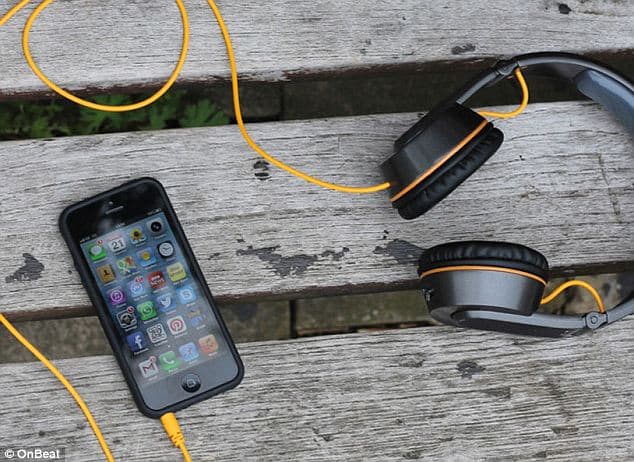OnBeat Solar Headphones Charges Devices On The Go - Audio Engineer From UK
An audio engineer from Glasgow UK has come up with a new pair of solar headphones that make sure the battery life of your phones and tablets does not falter. Called the OnBeat headphones by Andrew Anderson, the brain behind this project, this device has a flexible solar cell built into the headband which captures energy from the sun. This energy is now stored in two rechargeable Lithium Ion batteries in each ear cup. When a phone or tablet is plugged into the headphones, this stored energy can be used to charge the devices. As simple as this idea may seem, it was a result of frustration due to limited mobile battery life. Because everyone listens to a lot of music these days and this can be draining on our mobile battery life and thus, he built the first two prototypes.
The solar cell has a surface area of 55cm3 with a charge capacity of approximately 0.55W. For the rainy days, these solar headphones can be charged via USB directly from your computer or mains socket. The headphones feature a lightweight and fully adjustable folding headband with custom developed ear-pads to ensure a comfortable fit for hours of gaming and music. Just as an addition, these OnBeat headphones also have an integrated remote for controlling the volume of the music in your ears.

Those who are interested in the tech specs, here are a few details -
The solar cell has a surface area of 55cm3 with a charge capacity of approximately 0.55W. For the rainy days, these solar headphones can be charged via USB directly from your computer or mains socket. The headphones feature a lightweight and fully adjustable folding headband with custom developed ear-pads to ensure a comfortable fit for hours of gaming and music. Just as an addition, these OnBeat headphones also have an integrated remote for controlling the volume of the music in your ears.

Those who are interested in the tech specs, here are a few details -
- Audio driver unit size: 40mm
- Impedance: 32 +/- 10% Ohm
- Frequency response: 20hz to 20,000Khz
- Sensitivity: 100 +/- 3 dB
- High powered flexible solar panel (poly-crystalline silicone)
- 55cm3 active solar area
- Two Li-Ion batteries (1000mAh)
- Provide a full battery recharge for mobile phone
- 5.5v charge capacity
Replies
-
 Abhishek RawalNot hating but, Even after listening music for 2 to 3 hours continuously, My Android's juice decreases by hardly 4-5%. I am quite sure in Apple it will be even lesser than Android.
Abhishek RawalNot hating but, Even after listening music for 2 to 3 hours continuously, My Android's juice decreases by hardly 4-5%. I am quite sure in Apple it will be even lesser than Android.
No one listens to songs 15 hours constantly. So, personally I won't back this project in Kickstarter.
If it project would be about solar powered iphone then it would be totally different story 👍 -
 Ashraf HZ
Ashraf HZ
Its basically putting backup batteries on somewhere convenient. I'm not a headphone kind of person, but these days I see many people using them on their daily commutes. 1000mAh (or x 2?) is quite a decent amount of back up. The solar charging aspect is just a bonus if you don't have access to a USB charging port.Abhishek RawalNo one listens to songs 15 hours constantly. So, personally I won't back this project in Kickstarter.
If it project would be about solar powered iphone then it would be totally different story 👍 -
 Sarathkumar ChandrasekaranI am sure it can help in emergency times.It can be helpful while watching videos.I am sure many android phones drain a lot while using or streaming videos.
Sarathkumar ChandrasekaranI am sure it can help in emergency times.It can be helpful while watching videos.I am sure many android phones drain a lot while using or streaming videos.
You are reading an archived discussion.
Related Posts
After the launch of the really successful Discover 100T and the sporty Discover 125ST, Bajaj Auto adds to its portfolio the all new Discover 125 T. Launched in India on...
more information in following site
https://www.decodedscience.com/nanotechnology-breakthrough-single-atom-transistor-created/11011
IDK whether this is technical discussion or not, SO I am posting in Chit-Chat discussion :
I have PC with loads of wires coming out of cabinet : ethernet cable,...
A team of Engineers/Researchers at University Of Southampton have demonstrated a method to store& retrieve the data as huge as 360TB on a single disk made up of quartz which...
Hey we use too many wireless gadgets now a days and the amount of Radio waves and other micro wave radiation density is really a growing threat to humans
If...
